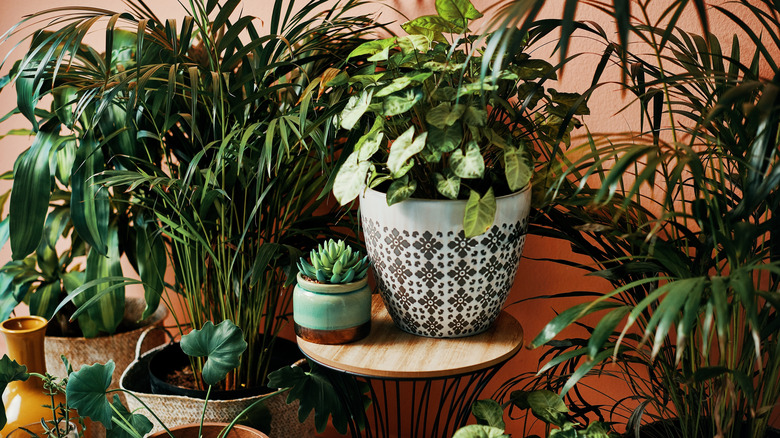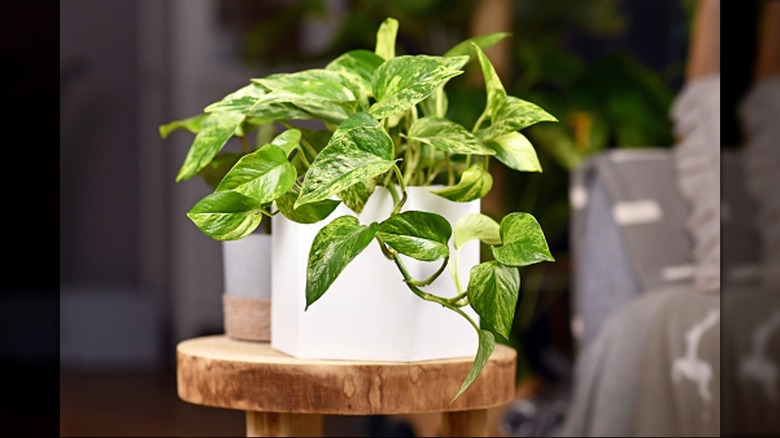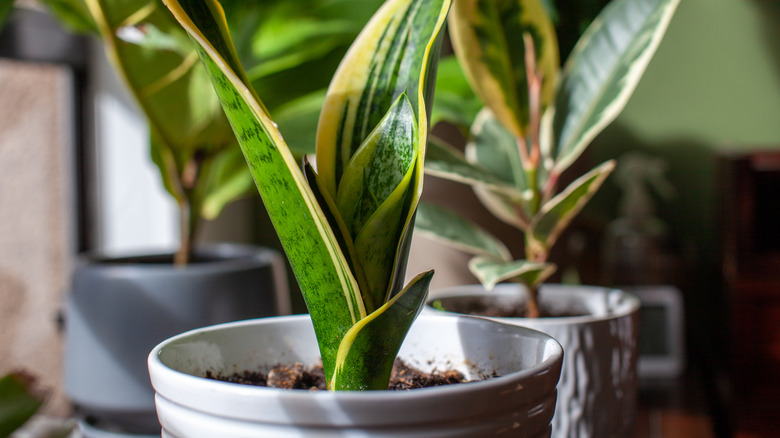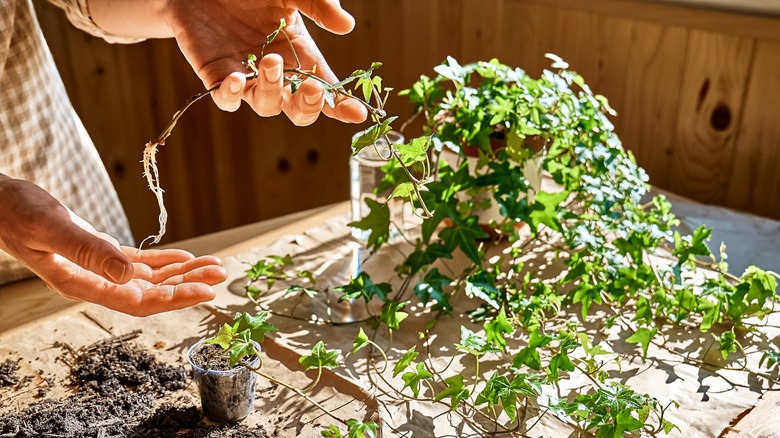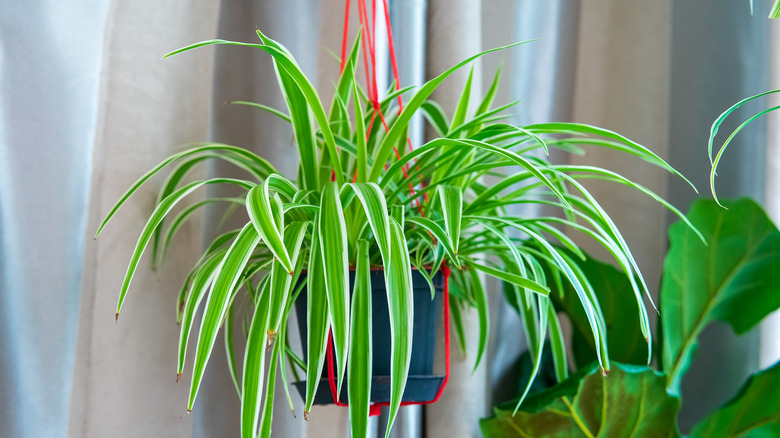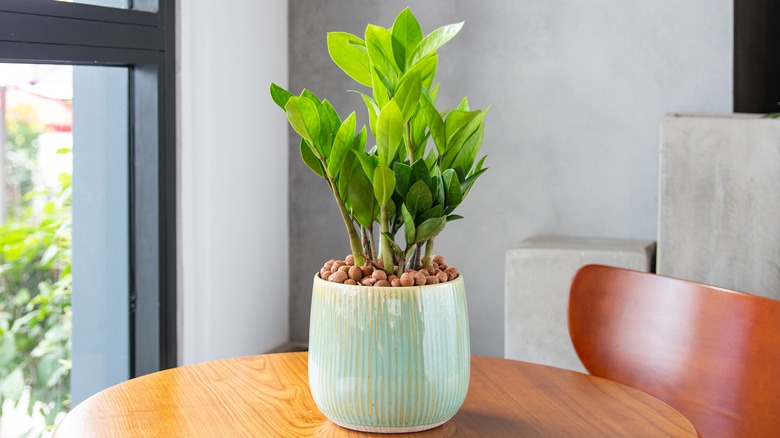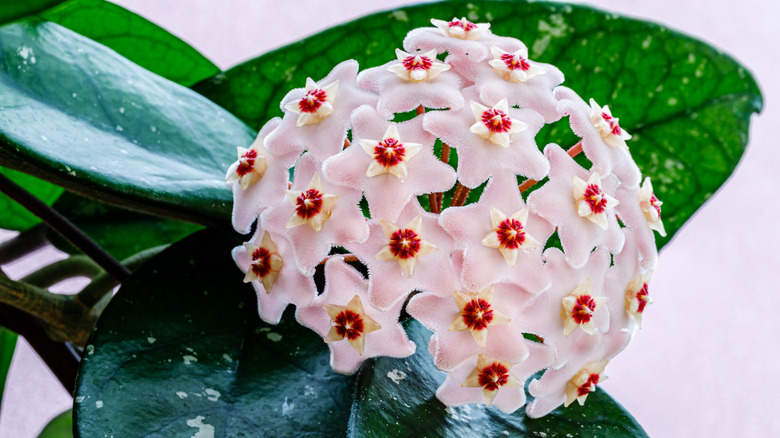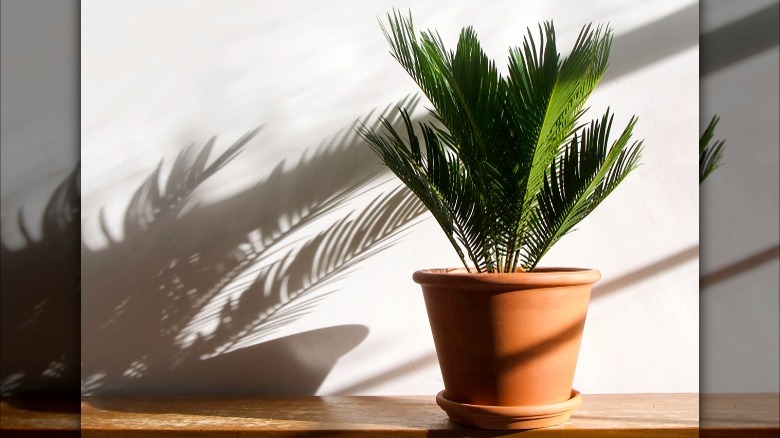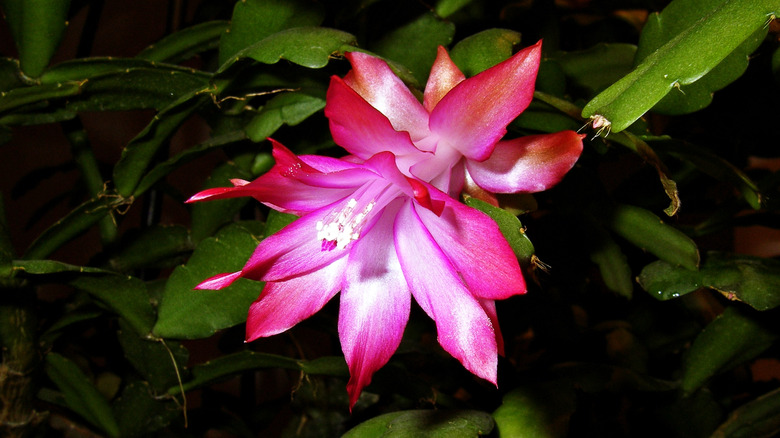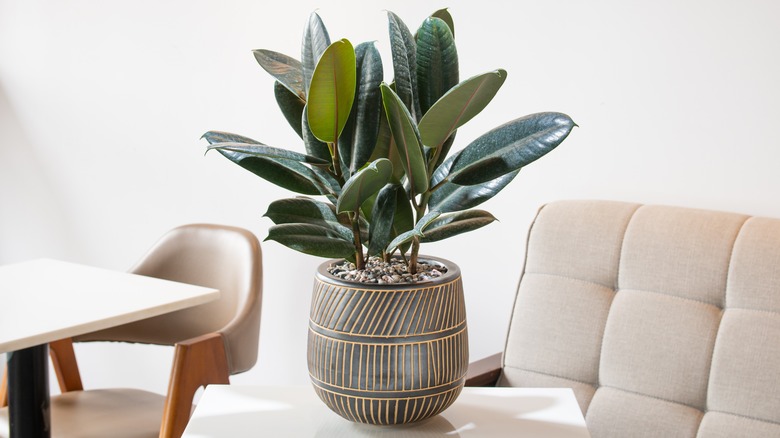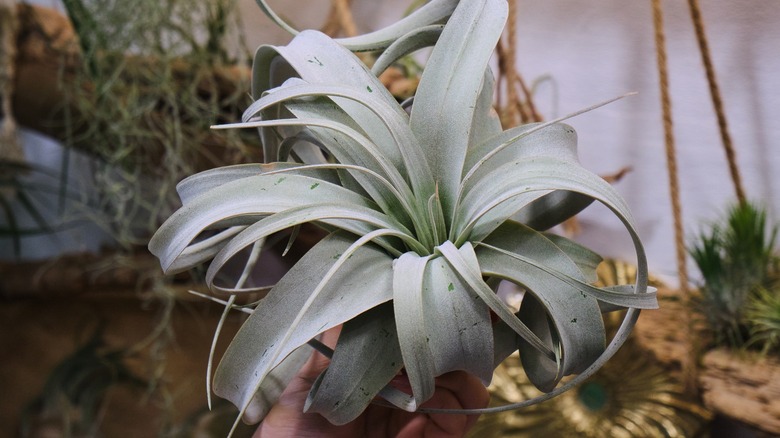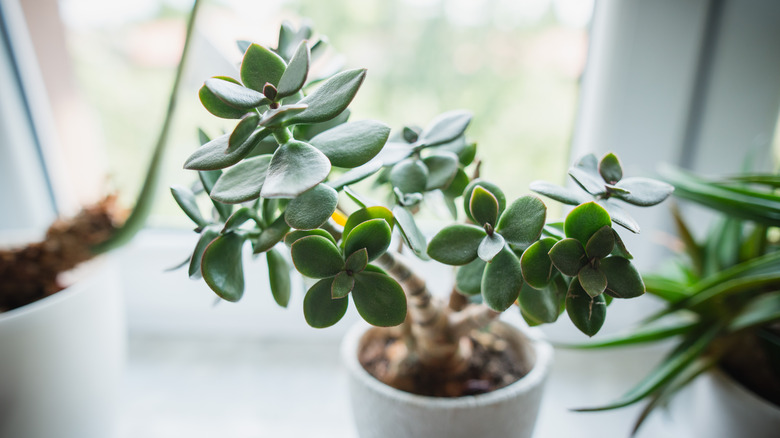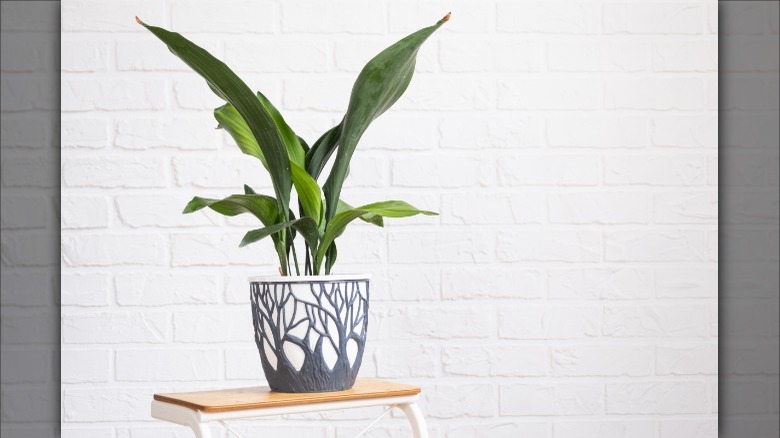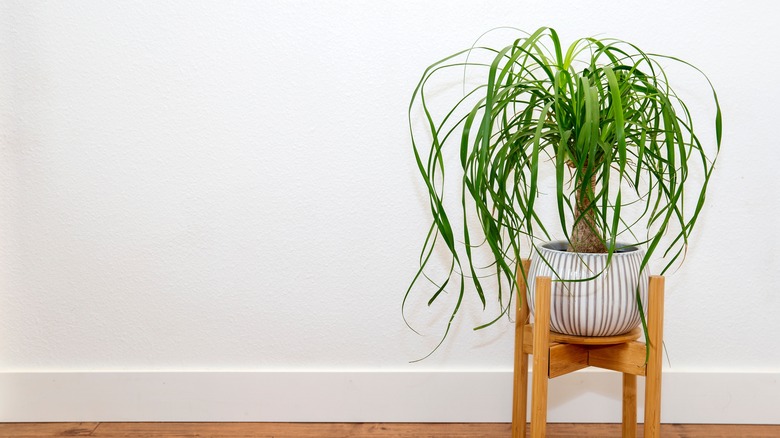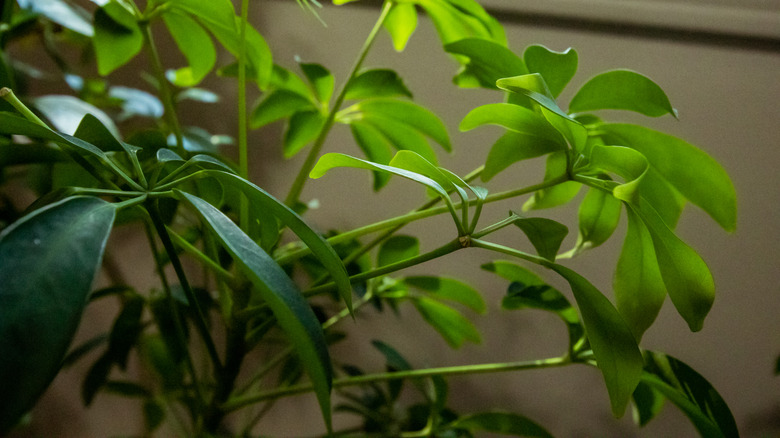14 Houseplants With Abnormally Long Lives
Knowing how long your houseplants will live can help you decide which kinds you're willing to take care of — so you can ensure you're getting the most out of your greenery. For instance, if you want the opportunity to switch things up regularly, you might want to opt for annual plants that only last for one year, for example, the colorful impatiens. If you want something that you can enjoy for a little longer but still doesn't require a major commitment, biennial plants might be your best bet, thanks to the fact that they stick around for two years, like the Chinese Forget-Me-Not. Of course, if you want houseplants that will live for years, you should opt for perennial plants, which can last for a surprisingly long time.
In fact, some plants can live for decades, if not even longer, due to their ability to keep reserves of required resources, which helps them endure through tougher times and less-than-ideal conditions. On top of that, perennials tend to have the ability to heal themselves and grow back sections of the plant that have been harmed or removed. Of course, not all perennials last for the same amount of time. Some, like the snake plant, can last for multiple decades, whereas others, like English ivy, can last hundreds of years if properly cared for. Discover some of the most popular and interesting houseplants that can live abnormally long lives.
Devil's ivy
Devil's Ivy (Epipremnum aureum) boasts delightful heart-shaped leaves while growing captivating vines. Living multiple years, if it gets the proper TLC, Simply place it in a spot where it can stay warm without getting too much direct sunlight. Be sure to water every week when it's warmer (or when the soil starts to dry out) or every three weeks when cooler (or when the soil is completely dry). Also, add fertilizer once each month from spring to the end of summer. The ASPCA says its insoluble calcium oxalates are toxic to pets.
Snake plants
If you add a snake plant (Dracaena trifasciata) to your home's greenery, you can expect it to live for up to 10 years, although some can last as long as 25 years. A durable option that doesn't need special care — place your snake plant in a spot that gets indirect light and water once every other week or when the soil is dry. With gorgeous green leaves that may stretch up to 5 feet tall, this plant can make a statement in your home for years to come. It's toxic to pets, per the ASPCA, so be cautious.
English ivy
English Ivy (Hedera helix) is another hanging plant that can live for an impressively long time. In fact, it can continue to grow for hundreds of years and happens to grow quite quickly after taking some time to establish itself. This is also another plant that won't be overly demanding and simply needs indirect light, moist soil, and a touch of humid air, if possible. At the same time, English Ivy is considered a noxious weed in many states, so it's best to keep it potted and indoors. The ASPCA also says that it's toxic for pets, so keep that in mind.
Spider plant
The average spider plant (Chlorophytum) will live for around 10 years, which is certainly impressive. These plants are incredibly versatile and can survive and thrive in a variety of different lighting, from artificial growing lamps to direct sunlight. Water them once each week while letting the soil dry out. If needed, you can water them twice a week, but don't overdo it. These long-lasting plants can do well in regular potting soil with potentially the occasional fertilizer to give them a boost.
ZZ plant
Known as ZZ plants (Zamioculcas zamiifolia), eternity plants, or Zanzibar gems, you'll understand why they earned the latter two names when you see the long-lasting shining green leaves that grow on stately stems. Give it room to grow as well as indirect light that isn't too bright, fertilizer, and water every couple of weeks to see it happily thriving for at least a couple of decades. Beyond that, the plant can survive dire conditions for up to half a year, which means that even those who don't have a green thumb should be able to keep it alive for ages.
Wax plant
Wax plants (Hoya carnosa) may have been given that name thanks to the leaves, which are, in fact, waxy. However, these Hoya plants also produce stunning balls of aromatic flowers that grow on long vines that are velvety to the touch. Some people can keep their wax plants thriving for multiple decades, depending on the quality of care they receive. These plants are incredibly resilient, but be sure to keep them in a spot where the temperature doesn't get too cool and where it can get indirect light that's on the brighter side.
Sago palm
If you love classic palms and want one you can treasure for years, consider picking up a sago palm (Cycas revoluta). Staying relatively small for a palm, this plant has been around since the prehistoric age. While that's cool in itself, what also makes this slow-growing palm so special is that it can continue to live in your home for up to or over five decades. Granted, yours might last longer, with some reporting that they can live for over 200 years. Just beware that some of the sago is toxic to pets, per the ASPCA.
Christmas cactus
There's no doubt that many plant lovers surely appreciate how a Christmas cactus (Schlumbergera bridgesii) blooms with lovely flowers, popping up around the holiday season (hence the name) and making this option truly special. That's not to mention that those same people likely love that the Christmas cactus can live up to 100 years. Yes, that's right, a full century! Help your Christmas cactus last that long by watering it regularly to keep the soil moist and fertilizing it when necessary.
Rubber fig
The rubber fig (Ficus elastica) is another houseplant that grows fabulous foliage, requires little care, and will live for ages. In fact, this is a plant that can live for multiple decades. To give your rubber fig the chance at a long life, water it once every week or so and don't douse it, but offer it a nice misting. Although it can deal with bright light, it would prefer a spot in your home where it can get indirect light.
Air plant
Air plants (Tillandsia) have some unique traits during their lifecycle, which help to maintain the plant for many years. The origins of these plants can be traced back millions of years, and their size and ability to grow completely depends on the environment they are in. Although the parent plant may only experience a bloom once in its life, it produces pup plants, which take over a new lifecycle as the parent plant withers and dies. This process can essentially keep your plant growing for years on end.
Jade plants
Another plant that doesn't push itself to grow too fast, jade plants (Crassula ovatacan), can also live up to 100 years. Sometimes called lucky plants, fortune plants, or even money trees, they are thought to bring good vibes into your home if you have one around. Honestly, the fact that they live so long seems like good fortune. All you need to do is give them quite a bit of light and not too much water. On top of that, be sure to prune your jade plant occasionally if necessary. This plant is toxic for pets per the ASPCA, so be cautious.
Cast iron plant
If you know how strong a cast iron pan is, you won't be surprised to find out that the cast iron plant (Aspidistra elatior) is also quite hardy. Not known as a picky plant, it's another one that grows slowly in various conditions. It won't be bothered by a lack of bright light, temperatures that are warmer or colder than you'd think was ideal, and icky air. Due to their fierce durability, the cast iron plant can live a long time, some even making it to 25 years.
Ponytail palm
Featuring leaves that make it look like a typical palm, the ponytail palm (Beaucarnea recurvata) only grows around 1 foot or less each year. That's partially why it can live for multiple decades. When it finally reaches its peak, this plant can grow up to 30 feet if given the room. Fortunately, it would be ages before it got that big, so you can enjoy it indoors for years ahead. Simply provide it with water whenever the soil becomes dry, and your ponytail palm will reward you with blooming flowers.
Umbrella plant
With an adorable name inspired by the shape of the leaves, an umbrella plant (Cyperus alternifolius) can grow to be around 6 feet tall. If you don't have that kind of room inside, you can trim it occasionally and keep it pruned. This may be necessary thanks to the fact that the plant can live for over two decades or even longer. You'll also want to give it medium or bright sunshine, as well as water whenever the soil dries out, but keep it away from drafty areas.
